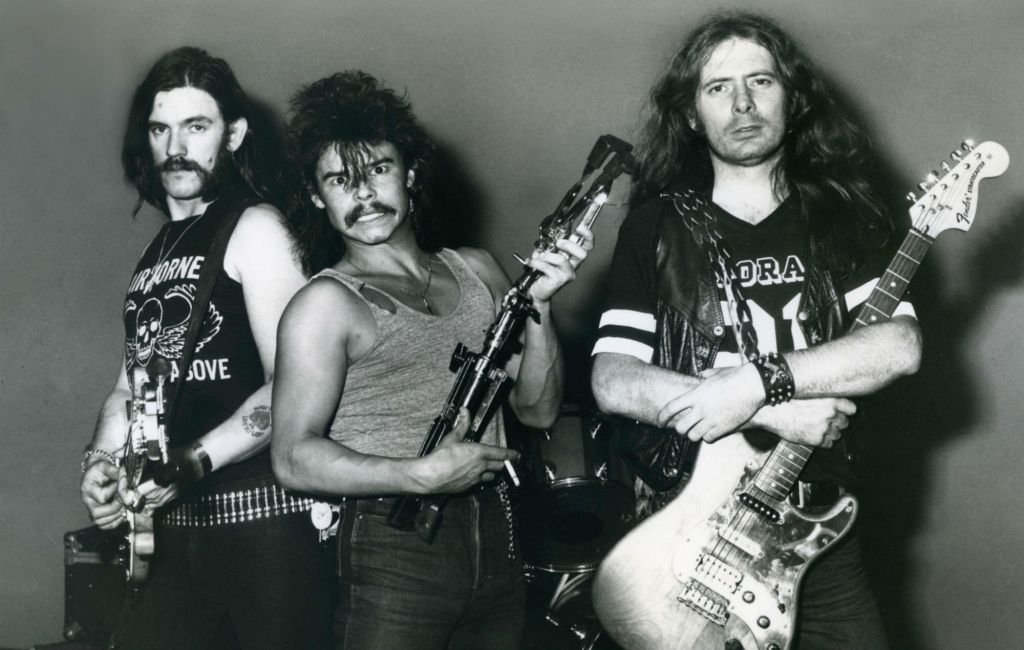Find out the story behind the legendary Metal album, four decades since its original release.

On this day back in 1980, Metal pioneers, Motörhead, released one of the most highly regarded metal albums of all time, Ace Of Spades. Their fourth studio album and debut release in the US, it was the emergence of this album that not only catapulted the band into their legendary status, but also paved the way for countless artists on the horizon.
Capturing a sound unlike any other, defying expectations from fans and bringing opposing fanbases together with the release, it is fair to say that Ace Of Spades reinvented the mould when it came to heavy metal. Paving the way for the iconic 1980’s music scene, it was this isolated vision that Motörhead withheld that allowed them to produce one of the most iconic releases in the metal world.

By the time the new decade hit, Motörhead were already beginning to make waves in the heavy music scene. Having released two highly successful albums, Overkill and Bomber, by this point, the band were already gathering a loyal fanbase by the time they came to release their fourth album, Ace Of Spades.
Yet, despite this highly respectable level of success the band experienced prior to the release, no one could have predicted the shockwaves Motörhead would send across the globe as Ace Of Spades emerged.
A staple in any metalhead’s collection and the band’s most commercially successful album of their entire discography, selling over 100,000 copies, the album caught many off-guard and firmly placed Motörhead as a force to be reckoned with.
Peaking at number 4 on the UK Albums Charts from its debut and reaching gold status due to the vast amount of copies sold, the album helped Motörhead erupt onto the American music scene for the first time since their formation five years prior.
With their aggressive, all-guns-blazing approach, the eruption of sound produced in Ace Of Spades not only avoided the cliché stereotypes of metal at the time, but also united numerous fan bases in the process.
Creating a Proto-Thrash style of playing, distinctive to them, the album appealed to both Heavy Metal fans, but also inspired and galvanised Punk listeners simultaneously for the first time.
Resenting the confinement and restrictions associated with genre, Ace Of Spades was inspired by an overwhelming desire to diverge away from the rhythmic sound of bands such as Rainbow and Deep Purple. Melding a more ferocious and punk-inspired angst into their traditional metal sound, the album became a landmark release for the metal community, paving the way for bands such as Metallica and Pantera, building the foundations the upcoming Thrash scene that would emerge later that decade.

Although withholding one clear vision when it came to the direction of their sound, the actual inspiration for the tracks was much more varied.
Recorded in just over a month, the inspiration for the tracks came from far and wide, diverting away from the concept-albums popular at the time. Striking inspiration from his time as a roadie for the legendary guitarist, Jimi Hendrix, the track ‘(We Are) The Road Crew’ was written by the frontman as a tribute to the band’s roadies at the time.
Tracks such as ‘Jailbait’, ‘Love Me Like a Reptile’ and ‘The Chase Is Better Than the Catch’, on the other hand, took a more traditional form of inspiration, highly common at the time. Blatantly referencing sex as one of the album’s primary motifs, these tracks provoked sparks of controversy from various critics and Women’s Rights Activists.
Yet, despite many various themes arising throughout the album, the predominant theme that the band strived towards was unmistakably inspired by The Wild West.
‘Shoot You In The Back’ and the title track, ‘Ace Of Spades’ helped convey this central motif, alongside the cover of the album itself. With the album cover inspired by the Spaghetti-Western films popular at the time, each member on the cover was inspired by a different type of Western Protagonist.
Taking place in the Sandpits of Barnet, North London, rather than the Arizona desert it is depicted to be, Lemmy’s costume was inspired by Bret Maverick from the TV series, Maverick, drummer, Phil Taylor’s outfit was based on Marlon Brando’s character in the 1961 film, One-Eyed Jacks, and guitarist, Eddie Clarke’s outfit was based on Clint Eastwood’s character throughout The Man With No Name Trilogy.

Promoting the album constantly throughout 1980 and 1981, it comes as no wonder why the success of Ace Of Spades became exponential, catapulting Motörhead into the stardom status they are regarded as now. Performing their lead single, ‘Ace Of Spades’ twice on Top Of The Pops and featuring on UK Children’s show, Tiswas, to promote the album, the album came to conquer the metal scene across the globe for the first time in their career.
From their deviation away from other bands in the scene and their new, punk-inspired approach, Ace Of Spades revolutionised the metal scene for decades to come. Avoiding the cliché aspects of other heavy metal bands at the time, the album allowed Motörhead to reinvent their sound and break into the US Music charts, indelibly paving the way for the thrash movement that was soon to follow.
.
.
Is there anything we missed? Let us know via the comment section below!
